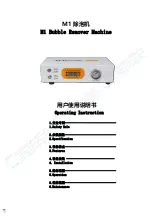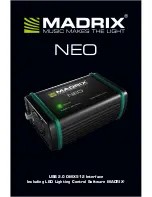
Basic Electrostatics System
Model No. ES-9080
26
!
NOTE:
Depending on the model of parallel plate capacitor you have,
there may be only one plate that is movable. If your model allows both
plates to be moved, choose one to keep fixed and the other to be the
movable one.
1.
Connect the electrometer across the plates of the capacitor and set the
separation between the plates to about 3 mm.
2.
Raise the side of the set up nearest the movable plate by setting a
block about 3 cm high below it, as shown in Figure 3.5.
3.
Use the voltage source
to momentarily touch
the plates and charge
them to about 4/5 full
scale. Record the
voltage reading of the
electrometer,
V
i
.
4.
Carefully increase the
separation of the plates
until it is enough to
insert the dielectric without forcing it. It should be enough so that
you can simply lean the dielectric sheet against the stationary plate.
Make sure the dielectric you are using is free of residual charge
before inserting it.
5.
After inserting the dielectric, return the plates to the original 3 mm
separation and record the new electrometer reading,
V
f
.
6.
Pull the plates apart again, and lift and carefully remove the
dielectric sheet.
7.
Return the plates to the original 3 mm separation and check that the
electrometer reading agrees with the original
V
i
reading.
Figure 3.5: Experimental Setup
fixed plate
movable plate
block











































